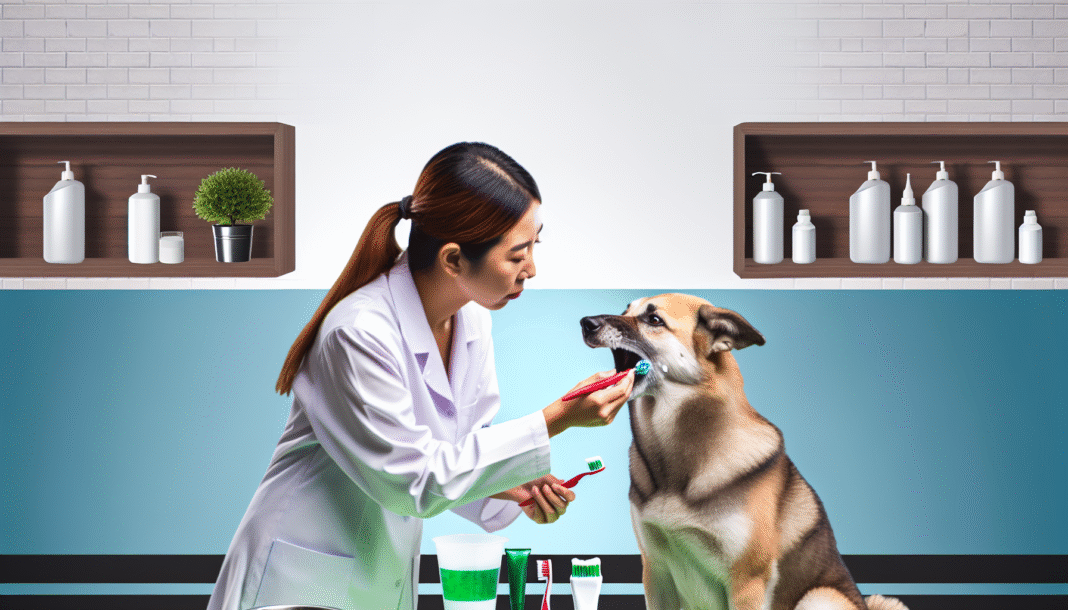Taking care of your pet’s oral health is crucial for their overall well-being. Just like us, pets can suffer from dental problems that can lead to pain and serious health issues if not addressed. This essential guide will walk you through the importance of brushing your pet’s teeth, how to do it correctly, signs of dental issues, and tips for maintaining good oral hygiene.
Why Oral Health Matters
Maintaining your pet’s oral hygiene prevents dental diseases, bad breath, and systemic health issues. Plaque buildup can lead to periodontal disease, which may eventually result in tooth loss. Moreover, bacteria from the mouth can enter the bloodstream, affecting vital organs like the heart, liver, and kidneys.
Common Dental Problems in Pets
- Periodontal Disease: The most common dental issue, characterized by inflamed gums and loss of tooth support structures.
- Tooth Decay: While less common than in humans, pets can suffer from cavities.
- Oral Tumors: Abnormal growths can occur in the mouth, requiring vet intervention.
Signs of Dental Issues
It’s vital to catch dental problems early. Look for these signs in your pet:
- Bad Breath: A sign of bacterial buildup.
- Excessive Drooling: Often indicates pain or discomfort.
- Difficulty Eating: May point to tooth pain or inflammation.
- Red or Bleeding Gums: A clear sign of periodontal disease.
- Pawing at the Mouth: Indicates discomfort or irritation.
Tools You’ll Need
Before you start brushing, gather these essential tools:
- Pet Toothbrush: Designed specifically for pets, these brushes have softer bristles.
- Pet Toothpaste: Never use human toothpaste; it can be toxic to pets. Many veterinary pastes come in flavors your pet will enjoy.
- Finger Brush: Great for pets that are nervous about a traditional toothbrush.
Step-by-Step Guide to Brushing Your Pet’s Teeth
Step 1: Get Your Pet Comfortable
Before introducing the toothbrush, help your pet feel at ease. Sit with them in a quiet area, and offer them treats or cuddles. Gradually acclimate them to having their mouth touched.
Step 2: Introduce the Toothpaste
Let your pet taste the pet-friendly toothpaste. This step will help them associate the toothpaste with something positive.
Step 3: Brush in Small Sections
- Lift the Lips: Gently hold your pet’s lips back to expose the teeth and gums.
- Start Slowly: Begin by brushing just a few teeth at a time, focusing on the back molars where plaque builds up the most.
- Use Circular Motions: Brush in small circles along the gum line to effectively remove plaque.
Step 4: Stay Positive
Keep the experience enjoyable! Use a cheerful tone and offer plenty of praise and treats. If your pet seems anxious, take a break and try again later.
Step 5: Frequency Matters
Aim to brush your pet’s teeth at least two to three times a week. For optimal results, daily brushing is ideal.
Additional Oral Care Tips
Regular Vet Check-Ups
Schedule regular dental check-ups with your veterinarian. They can perform professional cleanings and check for potential dental issues.
Dental Chews and Toys
Incorporate dental chews and toys into your pet’s routine. These can help reduce plaque buildup and keep their teeth strong.
Maintain a Balanced Diet
Feeding your pet a balanced diet will also support dental health. Some specially formulated food helps reduce tartar.
Monitor Changes
Keep an eye on any changes in your pet’s oral health. If you notice persistent bad breath, changes in eating habits, or any other symptoms, consult your veterinarian.
Conclusion
Taking the time to care for your pet’s teeth will pay off in the long run, keeping them healthy and happy. By following this guide, you can ensure your furry friend enjoys optimal oral health. Happy brushing!





